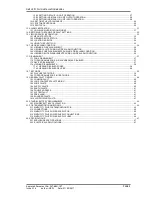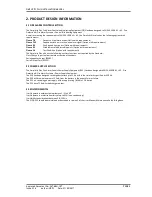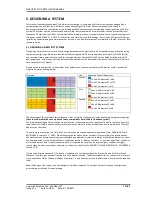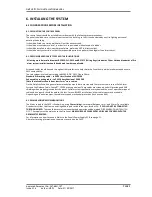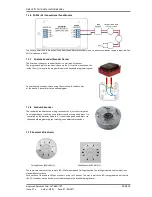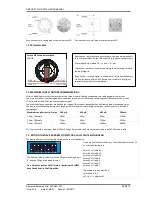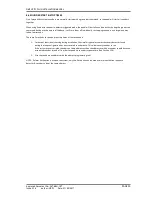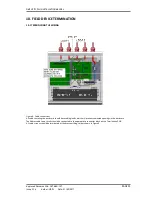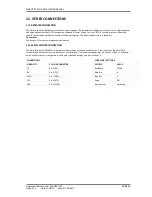
SIMPLICITY PLUS INSTALLATION MANUAL
Approved Document No: GLT.MAN-107
PAGE 8
Issue 3.16 Author: NRPJ Date: 21/09/2017
5. DESIGNING A SYSTEM
This manual is not designed to teach Fire Alarm System design. It is assumed that the System has been designed by a
competent person, and that the installer has an understanding of Fire Alarm System components and their use.
We strongly recommend consultation with a suitably qualified, competent person regarding the design of the Fire Alarm
System. The System must be commissioned and serviced in accordance with our instructions and the relevant National
Standards. Contact the Fire Officer concerned with the property at an early stage in case he has any special requirements.
If in doubt, read BS 5839: Pt 1: 2013 “Fire Detection and Alarm Systems for buildings - Part 1: Code of Practice for Design,
Installation, commissioning and maintenance of systems in non-domestic premises” available from the BSI, or at your local
reference library.
5.1 DESIGNING A SIMPLICITY SYSTEM
Designing a Simplicity Plus System is a fairly straightforward matter. It just takes a bit of thought to zone allocation during
the system design stage. We believe that the default configuration of 16 devices per zone (for Simplicity Plus 64 & 126),
and common alarm operation are suitable for most applications. Simplicity Plus 252 has the default configuration of 32
devices per zone, with 4 zones per loop, but these zone boundaries can be moved if so desired. The example (1) below is
for a Simplicity Plus 126 panel.
Decide on the zone allocation for the system. Each default zone can have a maximum of 16 devices fitted. Consider the
simplified 3-storey building below.
Floorplan
Floor
Zones and Default Addresses
Second
Zone 6: Addresses 81 to 96
Zone 7: Addresses 97 to 112
Zone 1: Addresses 1 to 16
First
Zone 4: Addresses 49 to 64
Zone 5: Addresses 65 to 80
Zone 1: Addresses 1 to 16
Ground
Zone 2: Addresses 17 to 32
Zone 3: Addresses 33 to 48
Zone 1: Addresses 1 to 16
The advantage of this method of zone allocation is that it simplifies the panel set-up by eliminating a programming stage.
(Note that a Simplicity 64 can only have 4 zones, so would not be suitable for the above system)
The main disadvantage of this method of zone allocation is the maximum zone capacity of 16 devices. If a zone has more
than 16 devices it would need to be split into smaller zones. Similarly, a zone with only one device would leave 15 empty
addresses on that zone.
To overcome this limitation, the Simplicity Plus now allows the zone boundaries to be moved. (See CHANGING A ZONE
BOUNDARY in section 12.7). NOTE: When changing the zone boundaries, consider if there are likely to be extra devices
added to that zone before commissioning is complete, and whether it is worth allowing 2 or 3 empty addresses in a zone.
Sounder operation. On the Simplicity Panels, the default setting is common sounders, i.e. an alarm signal from any device
will activate all sounders. If zonal sounder operation is required the simplicity can now configure sounders to trigger
zonally when an alarm comes from a detector, a call point, or both (see CHANGING THE ALARM RESPONSE – SOUNDERS in
section 12.8).
If more sophisticated sounder & I/O operation is needed, ask your dealer about the Premier Quatro Fire Alarm Panels.
Whenever possible, give each device as descriptive a label as possible. The better the description, the easier it is to locate
in the event of an alarm. The panel allows 20 characters. It may be necessary to use abbreviations to achieve the required
label.
Keep the design of the system, and any changes to it well documented. This makes it easier to trace any configuration
errors during installation & commissioning



